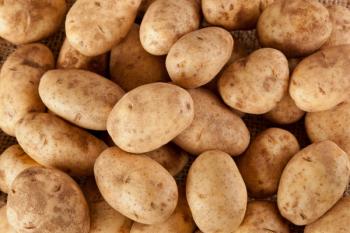
Advances in Atomic Spectroscopy
Webinar Date/Time: Tuesday, February 28 and Wednesday, March 1, 2023 Morning Session: 9 am EST | 6 am PST | 3 pm CET | 2 pm GMT Afternoon Session: 2 pm EST | 11 am PST | 8 pm CET | 7 pm GMT
Join us for this interactive, two-day virtual symposium to learn about important advances in atomic spectroscopy techniques and their applications.
Register Free:
Event Overview:
Spectroscopy magazine and the Society for Applied Spectroscopy (SAS) are pleased to present this third annual joint virtual conference, “Advances in Atomic Spectroscopy.” In this interactive, two-day virtual symposium, leadingA analytical scientists share important advances in atomic spectroscopy techniques and their application. Techniques discussed will include inductively coupled plasma–mass spectrometry (ICP-MS), ICP–optical emission spectroscopy (ICP-OES), single-cell ICP-MS (sc-ICP-MS), laser-ablation ICP-MS (LA-ICP-MS), laser-induced breakdown spectroscopy (LIBS), and advanced laser technologies. Speakers will address applications in strontium isotope measurements, the analysis of vaping liquids and aerosols, determination of nutritional elements in foods, single-cell analysis, bioimaging, nanoparticle analysis, and LIBS imaging. Each morning session will include a live question-and-answer period will all of the speakers. Join us!
All attendees will be eligible to receive a certificate of attendance from the Society for Applied Spectroscopy.
We wish to extend a special thank you to Derrick Quarles, PhD, the chair of the Atomic Section of the Society for Applied Spectroscopy, for developing this program.
All attendees will be eligible to receive a certificate of attendance from the Society for Applied Spectroscopy.
Top Reasons to Attend
- Learn about important advances in ICP-MS, ICP-OES, single-cell ICP-MS (sc-ICP-MS), laser-ablation ICP-MS (LA-ICP-MS), laser-induced breakdown spectroscopy (LIBS), bioimaging, and advanced laser technologies.
- Stay abreast of evolving applications of the techniques, related to strontium isotope measurements, the analysis of vaping liquids and aerosols, determination of nutritional elements in foods, single-cell analysis, bioimaging, nanoparticle analysis, and LIBS imaging.
- Discover new solutions and approaches to overcoming challenges with these techniques and in specific applications.
Who Should Attend
Anyone who wishes to stay up to date with the latest developments of atomic spectroscopy techniques and their application.
Day One, Tuesday, February 28:
Morning session, 9:30 am—12:15 pm EST
Advances in Atomic Spectroscopy Techniques and Applications, I
9:30 am EST
Tracking the Movements and Range of an Arctic Woolly Mammoth Using Strontium Isotopes: Lessons for Current Climate Challenges?
Johanna Irrgeher, Montanuniversität Leoben, Leoben, Austria
Little is known about the mobility and range of the woolly mammoth (Mammuthus primigenius). In this study, high temporal resolution sequential analyses of strontium isotope ratios along an entire 1.7-meter-long tusk helped to reconstruct the movements of an Arctic woolly mammoth that lived 17,100 years ago, during the last ice age. Based on banding patterns of the tusk and isotope data, annual bands measure approximately ~5.5 cm. The 87Sr/86Sr laser ablation dataset records ultrahigh resolution 87Sr/86Sr variations (~340,000 individual 87Sr/86Sr ratio measurements) along the tusk with a spot size of around 30 micrometers. Assuming that the tusk grew continuously and regularly throughout the year, we analyzed about 30 data points per day of tusk growth. Although it is unlikely that our 87Sr/86Sr record represents sub-daily mobility, the ultrahigh 87Sr/86Sr variations record monthly, weekly and potentially sub-weekly mobility patterns. An isotope-guided random walk approach to compare the tusk’s strontium and oxygen isotope profiles to isotopic maps was used. The modeling reveals patterns of movement across a geographically extensive range during the animal’s ~28-year life span that varied with life stages. The findings will be discussed in view of today’s climate challenges.
10:00 am EST
Exploring the Working Range of Automated Standard Dilution Analysis of Nutrient Elements in Foods by Inductively Coupled Plasma–Optical Emission Spectrometry
Jake A. Carter (presenter), chemist, Patrick J. Gray, research chemist, and Todor I. Todorov, chemist, all in the Office of Regulatory Science, Center for Food Safety and Applied Nutrition, U.S. Food and Drug Administration, College Park, Maryland, USA
Inductively coupled plasma–optical emission spectrometry (ICP-OES) is an important tool for measuring nutrient elements in food. ICP-OES methods typically determine analytical concentrations using external standard calibration but can be susceptible to matrix effects. The method of standard additions does not suffer from matrix effects but is time consuming and labor intensive. Automated standard dilution analysis (SDA) allows for online matrix-matched calibration without preparing individual standard additions for each sample matrix. This approach may solve both time and matrix issues and has been described in the literature as an attractive alternative to standard additions. The working range of the method for nutrient elements, however, is an understudied feature of SDA that may be a potential drawback to routine analysis of foods. We evaluated automated SDA performance through the analysis of 10 reference materials and four fortified (spiked) foods spanning the AOAC food triangle. We evaluated the working range, accuracy, and precision for analyses of nutrient elements in foods. Accepted accuracy (80–120% recovery) was achieved for 10 nutrient elements, Ca, Cu, Fe, K, Mg, Mn, Na, P, S, and Zn, when the analytical solution concentration to standard concentration ratio was less than 10. This equates to a working range for each element spanning at least two orders of magnitude. Removing outliers, Z scores (n = 95) ranged from –1.8 to 0.88, and the average recovery (n = 85) from fortification experiments was 97+/-12% (2σ). Therefore, automated SDA applied to ICP-OES may be used for nutrient elemental analyses in samples with difficult matrices such as foods.
10:30 am EST
Elucidating the Mechanisms of GHz Femtosecond Laser Ablation for LIBS Analysis
Minok Park (1,2) Yueran Gu (1,2), Xianglei Mao (1,2), Costas P. Grigoropoulos (2), and Vassilia Zorba (presenter, 1,2); (1) Lawrence Berkeley National Laboratory, Berkeley, California, USA; (2) Department of Mechanical Engineering, University of California at Berkeley, Berkeley, California, USA
Gigahertz (GHz) bursts of femtosecond (fs) pulses have emerged recently in the field of laser processing as a potential source for a new phenomenon termed “cold ablation.” Ultrafast bursts of pulses of GHz repetition rate (that is, pulses separated by times of the order of 1 ns) have yielded enhancements of removal rates in different target materials. However, the exact mechanisms for this new phenomenon, the ablation dynamics, and the utility of this technology for LIBS applications remain unknown to date. In this work we study the expansion dynamics of laser-induced plasmas produced by GHz bursts of femtosecond laser pulses and explore the mechanisms of the process as the basis for application in high precision, controlled spatial and depth resolution laser sampling for laser induced breakdown spectroscopy (LIBS). This research provides new insights into complex phenomena dominating laser–matter interactions in the GHz burst regime, and how they can be used for the development of next-generation laser-ablation sampling tools for spectroscopy applications.
11:00 am EST
Good Analytical Practices for Analyses of Metal Concentrations in Hydrophilic and Hydrophobic Vaping Liquids and Aerosols
R. Steven Pappas (presenter), Naudia Gray, and Mary Halstead, Centers for Disease Control and Prevention, Atlanta, Georgia
** Please note that this talk will only be available live.
Liquids containing nicotine or other active ingredients are aerosolized in electronic nicotine delivery systems (ENDS) and similar devices. Corrosion of the internal metal components inside the devices results in accumulation of metal oxide particles that are caught up in the aerosols produced by the devices. Inhalation of the toxic particles can increase health risks from using ENDS and similar aerosol devices. Sample preparation for analyses of trace metals is not the same as for organic samples. Glass must be completely avoided when trapping aerosols and during sample preparation for inorganic analyses. High metals purity polymers are appropriate materials for trapping aerosols and sample preparations. Chemists entering the regulatory analysis industry therefore need to be aware of these problems and of good inorganic analytical practices that will be discussed in this presentation. We have reported methods for polar and nonpolar aerosols using aerosol condensation traps made from high metals purity fluoropolymer tubing for analysis of toxic metals using triple quadrupole inductively coupled plasma–mass spectrometry (QQQ-ICP-MS) with a desolvating introduction system. New generation desolvating systems with adjustable temperature heated spray chambers helped solve calibration linearity problems. We have reported chromium, nickel, copper, zinc, cadmium, tin, and lead concentrations in ENDS aerosols and aluminum, chromium, cobalt, nickel, iron, copper, cadmium, tin, barium, and lead concentrations in ECDS aerosols using QQQ-ICP-MS.
11:30 am Question-and-answer period with all the speakers in the session
12:15 pm Session close
Afternoon session, 2:00–4:00 pm EST
Atomic Spectroscopy Applications, Tips, and Best Practices from Our Sponsors
More details to follow.
Day Two, Wednesday, March 1, 2023
Morning session, 9:30 am–12:15 pm EST
Advances in Atomic Spectroscopy Techniques and Applications, II
9:30 am EST
Analysis of Individual Cells by ICP-MS: New Analytical Strategies Using Laser Ablation and Single-Cell ICP-MS for the Determination of Biomolecules
Beatriz Fernandez (1) (presenter and corresponding author), Paula Menero-Valdés (1), Derrick Quarles Jr. (2), Héctor González-Iglesias (3), and Rosario Pereiro (1); (1) Physical and Analytical Chemistry Dept., University of Oviedo, Oviedo, Spain; (2) Elemental Scientific, Inc., Omaha, Nebraska, USA; (3) Dairy Research Institute of Asturias, Spanish National Research Council (IPLA-CSIC), Villaviciosa, Spain
Determination of biomolecules in biological samples provides key information in life sciences. With cell populations, it is difficult to correctly interpret experimental data due to their heterogeneity, unless they are investigated on a cell-by-cell basis. In this context, there is a need for innovative analytical techniques allowing for the quantitative analysis of the content of individual cells. Over the last few years, single-cell inductively coupled plasma–mass spectrometry (sc-ICP-MS) has been applied to different analytes (such as endogenous elements, internalized nanoparticles, metallodrugs uptake) in individual cells. The sc-ICP-MS technique can be used for cell-by-cell quantitative determination of target biomolecules within cell cultures, but the biomolecules’ distribution inside each cell cannot be determined. This limitation can be overcome by sampling the cells using laser ablation (LA) coupled to ICP-MS. In this work, we present sc-ICP-MS and LA-ICP-MS as complementary tools for comprehensive study (determination and localization) of target proteins in individual cells. Aiming to achieve significant amplification to detect proteins at low concentrations in the cell, metal-nanocluster–labelled immunoprobes are employed. The determination of proteins in individual human retinal pigment epithelial cells from different in vitro models is presented, comparing control cells with cultured cells either subjected to a pro-oxidative stress or pro-inflammatory treatments.
10:00 am EST
Advancements in LA-ICP-TOF-MS Bioimaging: From Sample Preparation to Data Analysis
Keith MacRenaris (presenter), Department of Microbiology and Molecular Genetics and the Quantitative Bio Element Analysis and Mapping (QBEAM) Center at Michigan State University (MSU), East Lansing, Michigan, USA; Thomas O’Halloran, Department of Microbiology & Molecular Genetics and Chemistry and the Elemental Health Institute, MSU; David Zee, Department of Chemistry, Northwestern University, Evanston, Illinois, USA; Andrew Crawford, Department of Microbiology and Molecular Genetics, MSU; Bong Hong, Department of Microbiology and Molecular Genetics, MSU; and Qiaoling Jin, Northwestern University and Argonne National Laboratory, Lemont, Illinois, USA
Laser ablation–inductively coupled plasma–mass spectrometry (LA-ICP-MS) has been used for quantitative elemental analysis and mapping of a myriad of sample types, providing unprecedented access to the elemental fingerprints that make up the world around us. From geological dating to determining the provenance of ancient artifacts or mapping the distribution of platinum anticancer drugs in patients, the breadth of discovery that LA-ICP-MS has enabled is allowing new breakthroughs in a variety of fields. One field that has been relatively scarce compared to the more established geological and forensic applications of LA-ICP-MS has been bioimaging. In this talk, I will discuss recent developments in LA-ICP-TOF-MS bioimaging including sample preparation, instrument development, and quantification that is providing a deeper understanding of the “elemental signatures” of tissues and cells. Consequently, we want to investigate if changes in these “elemental signatures” due to certain pathologies or molecular changes can lead to a better understanding of disease and open up new avenues for therapy and treatment.
10:30 am EST
Multimodal Imaging to Study the Uptake of Nanoparticles and Their Biological Effects in Tissues
Ilona Nordhorn (1), Matthias Elinkmann (1), Antje Vennemann (2), Martin Wiemann (2), Michael Sperling (1) and Uwe Karst (1) (presenter); (1) University of Münster, Institute of Inorganic and Analytical Chemistry, Münster, Germany; (2) IBE R&D Institute for Lung Health gGmbH, Münster, Germany
While nanoparticles continue to expand their range of applications in the materials sciences, health sciences, and in many other areas of research and industrial applications, there is increasing concern about their uptake, distribution and possible health effects in the body. Inductively coupled plasma–mass spectrometry (ICP-MS) in combination with dedicated sample introduction systems is one of the most powerful methods to study nanoparticles in tissues. In our current work, we focus on using laser ablation–ICP-MS (LA-ICP-MS) imaging to investigate the distribution of elemental constituents of the nanoparticles as well as endogenous elements in rat lung tissues and on their long-range transport to other organs after particle instillation. Quantification is performed by using gelatine-based matrix-matched internal standards. Total elemental imaging as well as single particle (sp)-based ICP-MS imaging provided valuable complementary information. Due to the comparably large size of the organ slices, micro X-ray fluorescence (µXRF) is used to pre-screen the samples, giving rise to the observation of areas of higher concentration of the nanoparticles in the lung tissue. Additionally, for selected types of particles, including silica as well as cerium, aluminium and manganese oxides, µXRF revealed higher phosphorous concentrations in the areas of exposure with the nanoparticles, indicating a biological response. Infrared (IR) imaging based on a quantum cascade laser (QCL) indicated stronger ester absorbance bands, thus linking the effects observed in µXRF to elevated lipid concentrations. Matrix-assisted laser desorption/ionization mass spectrometry (MALDI-MS) imaging analysis of lipids in the tissue samples confirmed that in tissues affected by the nanoparticles, various lipid classes are elevated, while others are depleted in comparison with healthy tissue, thus indicating fibrotic processes being initiated by the nanoparticles. Fibrosis in the lung tissues was subsequently confirmed by microscopic and immunohistochemical imaging. In conclusion, it was shown that exposure to and biological effects of nanoparticles in rat lung tissues can be investigated successfully by LA-ICP-MS imaging and a series of complementary imaging techniques based on spectroscopy in different spectral regions as well as mass spectrometry.
11:00 am EST
LIBS Imaging: Recent Advances and Perspectives
Vincent Motto-Ros, Light and Matter Institute (ILM), University Claude Bernard Lyon 1, Lyon, France
The imaging capability of laser-induced breakdown spectroscopy (LIBS) has high potential in various domains including biology, industry, geology and medicine. This approach can be distinguished by its ease of use, multi-elemental capability, and detection of light elements, as well as operation at ambient conditions. This is furthermore the only all-optical technique providing space-resolved elemental information with ppm-scale sensitivity and µm-range resolution. These advantages make LIBS imaging very attractive to be used in research laboratories for routine investigations. However, advanced technological solutions must be found for this application because elemental imaging requires high sensitivity, sharp spatial resolution, high speed of acquisition, and the ability to process a huge quantity of data. In this presentation, we will summarize the recent progresses made in the Light and Matter Institute and the CRITT Matériaux Alsace concerning the implementation of LIBS imaging. Different examples will be shown with the aim of illustrating the specificities of LIBS among other elemental imaging approaches, such as the possibility to detect and image light elements, the coupling with optical and Raman imaging and the analysis of large-scale samples. Different perspectives and remaining challenges will be proposed.
11:30 am Question-and-answer period with all the speakers in the session
12:15 pm Session close
Afternoon session, 2:00–4:00 pm EST
Atomic Spectroscopy Applications, Tips, and Best Practices from Our Sponsors
2:00 pm EST
How Fast Can You Go? Advantages of High Acquisition Speeds in Modern Analytical Techniques Using a TOF Detector
Lukas Schlatt, Product Manager for Vitesse, Nu Instruments
There are many application areas that greatly profit from high spectral acquisition times. Two of these application areas are nanoparticle analysis and laser ablation mapping, which have recently been of high interest and have gone through major improvements. Spectral acquisition times far lower than 1 ms allow for accurate nanoparticle identification in high-concentration solutions and the ability to generate large images using LA-ICP-MS at high resolutions in short times. In this talk, some recent advances in both applications areas will be shown, along with the resulting advantages.
More details to follow.
Speakers
Johanna Irregeher, PhD
Assistant Professor, Senior Scientist, and Head of the Isotopic Analysis Research Group
Montanuniversität Leoben, Leoben, Austria
R. Steven Pappas, PhD
Tobacco and Cannabis Inorganic Project Lead
Centers for Disease Control and Prevention
Jake Carter, PhD
Chemist
Office of Regulatory Science, Center for Food Safety and Applied Nutrition, the U.S. Food and Drug Administration, College Park, Maryland, USA
Vassilia Zorba, PhD
Group Leader, Laser Technologies Group, Lawrence Berkeley National Laboratory, and Associate Adjunct Professor, Department of Mechanical Engineering, University of California, Berkeley
Berkeley, California, USA
Beatriz Fernández, PhD
Associate Professor
Department of Physical and Analytical Chemistry, University of Oviedo, Spain
Keith MacRenaris, PhD
Associate Research Professor, Microbiology and Molecular Genetics, and Director of the Quantitative Bio Element Analysis and Mapping (QBEAM) Center
Michigan State University
Uwe Karst, PhD
Full Professor for Analytical Chemistry
University of Münster, Institute of Inorganic and Analytical Chemistry, Münster, Germany
Vincent Motto-Ros, PhD
Associate Professor
Light and Matter Institute (ILM), University Claude Bernard Lyon 1, Lyon, France
Lukas Schlatt, PhD
Product Manager, Vitesse
Nu Instruments
Register Free:
Newsletter
Get essential updates on the latest spectroscopy technologies, regulatory standards, and best practices—subscribe today to Spectroscopy.




